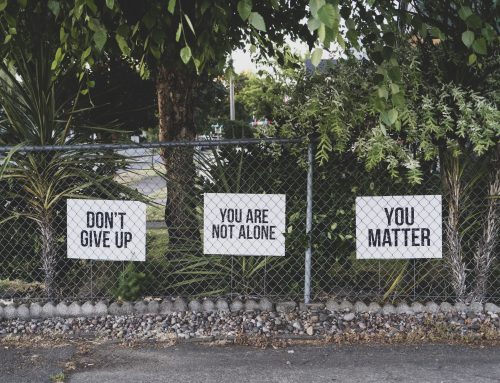My daughter, Samantha, was seven-years-old when she was diagnosed with an “unspecified mood disorder.” This is what doctors usually say when they don’t want to tell you a hard truth – in our case it was early-onset bipolar disorder (as opposed to major depressive disorder or seasonal affective disorder) and we were in for years of difficulty and our child had an illness that is both incurable and has a 20% mortality rate.
It wasn’t long before a new psychiatrist changed that to bipolar disorder, probably type one, meaning she is more prone to mania than other types of bipolar disorder. But the interesting thing about bipolar disorder in children, as opposed to adults, is the intensely variable nature of the illness. Most adults’ moods cycle over weeks or months – in children it can cycle multiple times a day or even an hour. Also, because of their age, they don’t have the cognitive capability to reason out what is happening and acknowledge the stressors which affect their mood. Although I think medicine should always be part of the treatment plan, intensive therapy and self-reflection are integral to moderating your mood. The best metaphor I have for bipolar disorder is not the usual roller coaster one, but another ride: the merry-go-round. When manic, your merry-go-round is spinning out of control and everyone else is going at a normal pace. When depressed, your merry-go-round is going so slow or is even off and you’re outside pushing and everyone else is going at a normal pace. An adult can explain that (or fake being “normal”) but a child simply cannot.
After her first hospitalization (for her second suicide attempt – we didn’t realize the first suicide attempt was real because who knew that a seven-year-old could want to commit suicide?) towards the end of third grade, Samantha and I had a long talk about her illness. She had to learn to live with it, as I had, and she was so sad that, even after going to the hospital, she wasn’t “fixed.” So, I told her it was like having Spidey senses. Spiderman senses things that other people don’t – he notices every little thing. Children with bipolar disorder do also – from the tag on their t-shirt to the seam in their socks, everything irritates them. Spiderman can hear things other people don’t and so can children with bipolar disorder – the clacking on the keyboard or the sound of someone chewing or the clinking of dishes being stacked on the shelf – these things can drive a kid like mine into full-blown mania in moments. Spiderman has a deep sense of injustice and so do kids with bipolar disorder. They want something, and they easily become obsessed with wanting that thing, often something very irrational like wanting a horse (which, for most children, is an unlikely scenario) or even a more trivial thing, like a video game now, when it is impossible for a variety of reasons (the store is closed, the video game is inappropriate, lack of money) and this is intolerable. While Spiderman’s villains are actual bad guys, a child’s villain might be the person who loves them and does everything he or she can to help them. Some of Spiderman’s villains think that they are working for justice, too. It can be hard to get your child with bipolar disorder not to see you as the villain, but sometimes you must accept that role. Not getting angry is the hardest thing that a parent of a child with bipolar disorder has to contend with – and we all fail. Yelling never helps, but we all end up there at times. The world around us sees our kids as spoiled, ill-behaved or even violent brats. It’s easy for us to forget their tumultuous existence when everything around them is so much more intense than it is for most people and they have zero control over their lives because they are children. Everything is dictated by grownups who may or may not understand the merry-go-round in their brains.
Here are some of the earmarks of early-onset bipolar disorder (based on my experience and extensive reading – I’m a mom, a writer, and an English teacher, not a doctor); not all of them will be true for all children and it can look different in different kids and at different ages.
Grandiosity: Children think that they are smarter or stronger than others or have powers that other people don’t have. My daughter believed that she was the Terminator for a year. She even tried to cut open her arm to show me the metal skeleton. Luckily, I stopped her and told her I believed her. Now, as she nears adulthood, she can recognize this type of thinking. She’ll say something like, I’m a genius. Oh, wait. That might be grandiosity. It took years of therapy for that to happen.
Rapid change in mood: A child can quickly go from anger to happiness back to anger or intense sadness. Sometimes your child can appear to have a flat affect and then be filled with jokes and clowning around and then be angry – all within moments. I once tried to count the number of times in one day that her mood changed, while I was trying to figure out what triggered it. Exhausted, I gave up at thirty. Sometimes there is a clear trigger (like someone yelling or she was denied something she believed she needed) but sometimes it’s nothing discernable to anyone, even herself.
Impulsivity: All people have moments where they act on impulse and spend money they shouldn’t or say things that wish they hadn’t, but usually neurotypical people are able to stop themselves based on a lifetime of training. This is often not the case for people with bipolar disorder, particularly when they are manic. This can lead to anything from blowing all the money your child had been saving for, say, a big-ticket item like a video game console on pastries and candy to jumping into a dangerous situation, like sex with a stranger.
Difficulty with sleep: Falling asleep, staying asleep (or getting good sleep that includes REM sleep, deep sleep and light sleep patterns) and then having a hard time waking up are all parts of bipolar disorder. Samantha lost credit for a whole year of school because she couldn’t fall asleep and then she couldn’t wake up. It took a concerted effort on the part of her whole team (psychiatrist, therapist, us, and, most importantly, her) to figure out the meds and that sometimes you just have to get up even when you are super sleepy. That takes a great deal of maturity to accept.
Fear of harm: Many children with bipolar disorder (and some think that this is its own illness) are obsessed with gore and violence and are afraid of the world around them and of themselves. Many of the things they fear are irrational. My daughter was terrified, for years, that owls would break through our windows and attack us at night. She has also been afraid that she could accidentally kill me in her rage. I did walk around for a good eight years covered in bruises from deflecting her throwing things and having to physically restrain her when she had what we referred to as “nuclear meltdowns” – but she never seriously hurt me and never hurt me on purpose. Some children with bipolar disorder do hurt others on purpose – usually younger siblings.
Auditory and/or Visual Hallucinations: Some children experience seeing and/or hearing things that aren’t there. Many people fear that this is a sign of schizophrenia, and while it could be, it doesn’t definitively mean that. (And schizophrenia isn’t the end of the world either – it is a difficult disease but one which is portrayed in the media very negatively and not very realistically.) These are not always negative images or sounds, but they can be very disturbing and scary, especially when they start.
Suicidal Thoughts or Behavior: Children as young as five have successfully killed themselves. Not accidentally, but purposely. You may think that children that young cannot fathom death, but I would counter that with – can any of us? No one knows what lies beyond life. But I think that once we are aware of our own unique existence, the desire to end that existence can happen. And if your brain was so out of control, you might imagine ending your life, too. Often children with bipolar disorder have few friends or imagine they have few friends. We get angry with our children because we are human, and our children take it to the extreme – Mommy doesn’t love me now. Remember impulsivity from above? Part of the reason that many people with bipolar disorder are so successful at completing suicide is the impulsivity factor.
Hypersexuality: We aren’t supposed to think of our children as having sexual urges but children even in the womb masturbate. For children with bipolar disorder, this can lead to excessive masturbation (sometimes publicly), early sexual play, and risky sexual behavior. My best advice is to make sure you keep an open line of communication and lots of condoms around. That is probably the best advice for raising any teenager. You can forbid your child to have sex but that seems like a losing battle to me. You’d be better off being realistic and helping them to avoid situations where they are not in control. For little kids, this often means that undies stay on in public areas of the house and that they understand that they should never invite others to touch them until they are much older (and leave that part vague, because it’s different for every kid).
Obsessive Behavior: Many children are misdiagnosed as having ADHD because of their obsessive nature that is really a hallmark of bipolar disorder. My daughter will go through phases where she must play one video game or where she must watch one tv show, in order. You could offer her other fun options of things to do, like going to the pool or getting ice cream or going to the park and she would choose the obsession.
The School Part: School is one of the hardest parts for many kids. Not all kids act out at school, but mine sure did. All kids with bipolar disorder should have an Individualized Education Plan (IEP) and they should be made in conjunction with a therapist. My daughter was forever getting in trouble at school and was very depressed for a while because no one really wanted to be her friend. Other kids found her rages scary. She often absconded at school and everyone had to look for her. Ultimately, public school could not handle her. Just before Christmas in fifth grade, Samantha was suspended for the fifth or so time – that year. She had been suspended multiple times every year she was in school, starting with Pre-K. (Who knew you could be suspended from Pre-K?) Once she was diagnosed, she was always suspended “pending psychiatric review” and we’d have to go to the doctor and get a note that she was calm enough to return. That showed a profound misunderstanding of her illness. By this time in fifth grade, her psychiatrist said he wasn’t signing off on her going back. They did not understand her illness and could not provide a safe place for her to learn. It took several months of homeschooling and arguing with the district before we finally got out-of-district placement for her in a therapeutic school. It was the best thing that could have happened. She is blossoming and has become a much more reasonable person.
Samantha is now seventeen and looking forward to college after she graduates. She wants to study astrophysics and space and would love to go into space. She loves art and science fiction and her favorite shows are Star Trek (in all its iterations) and Dr. Who. She considers herself a gamer girl and loves to play video games online. It’s been almost two years since the last nuclear melt-down and, while her mood still fluctuates, she recognizes and tries to maintain an even demeanor, especially out of the house. She’s a totally different kid than the one who was diagnosed ten years ago. Don’t get me wrong – she is still not an easy kid – but she is almost unrecognizable by comparison. I didn’t think that we’d ever be where we are now and honestly – the sky isn’t the limit for her. The universe – or multiverse – is.

Judy Ryan Hall is a writer and itinerant teacher of writing who has lived in such far flung places as Iceland, Sudan, Germany and New Jersey. Her MFA is from William Paterson University. She has been published in Brevity, Split Lip Magazine, The Blueshift Journal and many other places. Judy is also a fiction reader for Literary Orphans. Her novel, Max Runs, was published in 2019 by Eliezer Tristan Publishing. It is about a woman raising a child with early on-set bipolar disorder, based on her own experience as a mother. She also writes about LGBTQ+ issues. Follow her blog on Facebook called Voluptuous Mermaid or follow her on Twitter or Instagram at @judashalah.







Leave A Comment